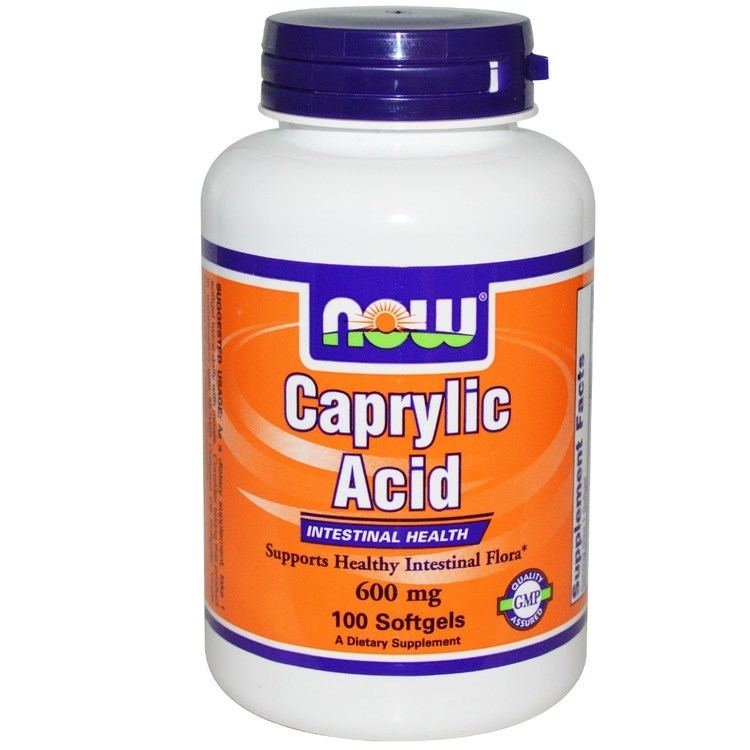Formula C8H16O2 Molar mass 144.21 g/mol Appearance Oily colorless liquid | Boiling point 237 °C Density 910 kg/m³ | |
 | ||
Caprylic acid
Caprylic acid is the common name for the eight-carbon saturated fatty acid known by the systematic name octanoic acid. Its compounds are found naturally in the milk of various mammals, and as a minor constituent of coconut oil and palm kernel oil. It is an oily liquid that is minimally soluble in water with a slightly unpleasant rancid-like smell and taste.
Contents
Two other acids are named after goats via the Latin word capra: caproic acid (C6) and capric acid (C10). Along with caprylic acid (C8) these total 15% in goat milk fat.
Uses
Caprylic acid is used commercially in the production of esters used in perfumery and also in the manufacture of dyes.
Caprylic acid is an antimicrobial pesticide used as a food contact surface sanitizer in commercial food handling establishments on dairy equipment, food processing equipment, breweries, wineries, and beverage processing plants. It is also used as disinfectant in health care facilities, schools/colleges, animal care/veterinary facilities, industrial facilities, office buildings, recreational facilities, retail and wholesale establishments, livestock premises, restaurants, and hotels/motels. In addition, caprylic acid is used as an algaecide, bactericide, and fungicide in nurseries, greenhouses, garden centers, and interiorscapes on ornamentals. Products containing caprylic acid are formulated as soluble concentrate/liquids and ready-to-use liquids.
For ghrelin to have a hunger-stimulating action on a hypothalamus, caprylic acid must be linked to a serine residue at the 3-position of ghrelin. To cause hunger, it must acylate an -OH group. Other fatty acids in the same position have similar effects on hunger.
The acid chloride of caprylic acid is used in the synthesis of perfluorooctanoic acid.
Dietary uses
Caprylic acid is taken as a dietary supplement.
Some studies have shown that medium-chain triglycerides (MCTs) can help in the process of excess calorie burning, and thus weight loss; however, a systematic review of the evidence concluded that the overall results are inconclusive. There has also been interest in MCTs from endurance athletes and the bodybuilding community, but MCTs are not beneficial to improved exercise performance.
